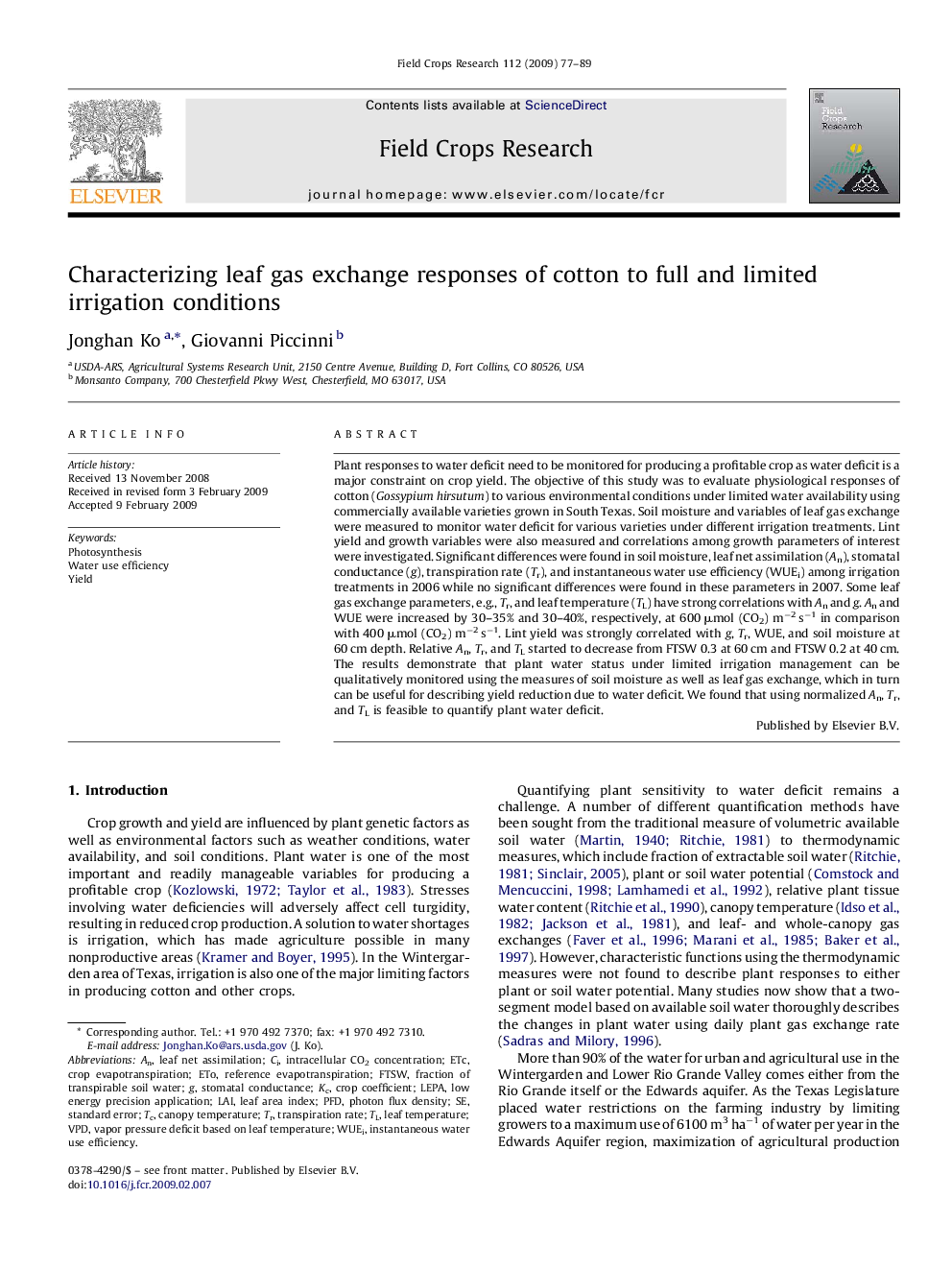| Article ID | Journal | Published Year | Pages | File Type |
|---|---|---|---|---|
| 4511150 | Field Crops Research | 2009 | 13 Pages |
Abstract
Plant responses to water deficit need to be monitored for producing a profitable crop as water deficit is a major constraint on crop yield. The objective of this study was to evaluate physiological responses of cotton (Gossypium hirsutum) to various environmental conditions under limited water availability using commercially available varieties grown in South Texas. Soil moisture and variables of leaf gas exchange were measured to monitor water deficit for various varieties under different irrigation treatments. Lint yield and growth variables were also measured and correlations among growth parameters of interest were investigated. Significant differences were found in soil moisture, leaf net assimilation (An), stomatal conductance (g), transpiration rate (Tr), and instantaneous water use efficiency (WUEi) among irrigation treatments in 2006 while no significant differences were found in these parameters in 2007. Some leaf gas exchange parameters, e.g., Tr, and leaf temperature (TL) have strong correlations with An and g. An and WUE were increased by 30-35% and 30-40%, respectively, at 600 μmol (CO2) mâ2 sâ1 in comparison with 400 μmol (CO2) mâ2 sâ1. Lint yield was strongly correlated with g, Tr, WUE, and soil moisture at 60 cm depth. Relative An, Tr, and TL started to decrease from FTSW 0.3 at 60 cm and FTSW 0.2 at 40 cm. The results demonstrate that plant water status under limited irrigation management can be qualitatively monitored using the measures of soil moisture as well as leaf gas exchange, which in turn can be useful for describing yield reduction due to water deficit. We found that using normalized An, Tr, and TL is feasible to quantify plant water deficit.
Keywords
PFDEToFTSWintracellular CO2 concentrationWUEiVPDLepAYieldWater use efficiencyinstantaneous water use efficiencycrop evapotranspirationreference evapotranspirationphoton flux densitystandard errorLeaf temperatureCanopy temperatureLeaf area indexLAICrop coefficientPhotosynthesistranspiration rateStomatal conductanceETcfraction of transpirable soil water
Related Topics
Life Sciences
Agricultural and Biological Sciences
Agronomy and Crop Science
Authors
Jonghan Ko, Giovanni Piccinni,
